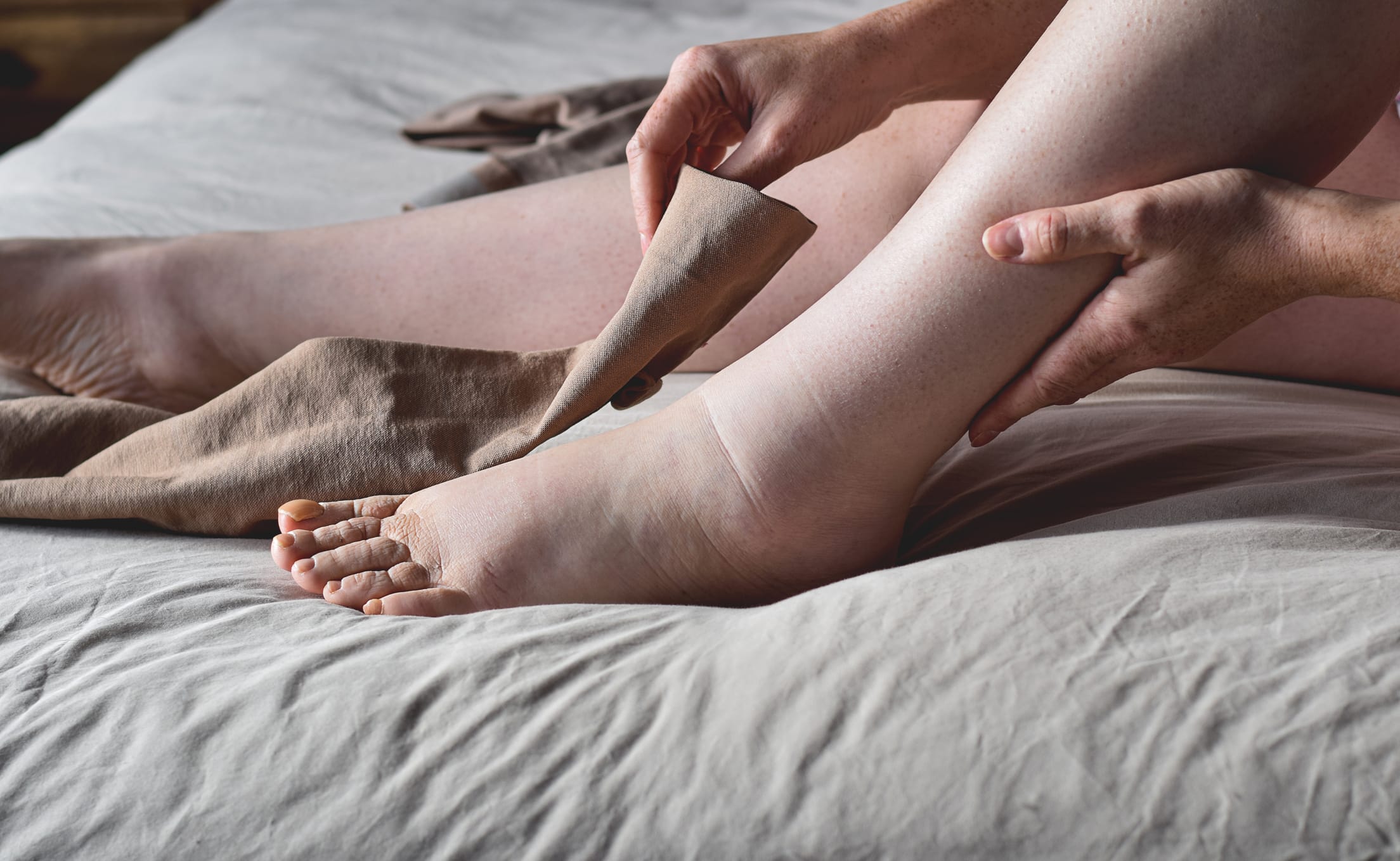Many of the main symptoms in transthyretin amyloid cardiomyopathy (ATTR-CM) are similar to those associated with heart failure. Swelling of the feet, ankles and legs is no exception. Thankfully, medication and lifestyle changes can help manage this symptom.
Why does edema occur in ATTR-CM?
Edema, the medical term for swelling in the legs, feet and ankles, is due to a buildup of fluid related to poor heart function. As the heart muscle thickens and stiffens, the heart struggles to pump adequately; as a result, blood doesn’t circulate properly around the body. This leads to excess blood and other fluids being pushed out of the blood vessels and into the tissues, where it accumulates.
Swelling in the legs, feet and ankles may be more noticeable at the end of the day, or after an extended period of standing. Due to the effects of gravity, edema more commonly occurs in the lower extremities. In more advanced cases of ATTR-CM, swelling of the abdomen — and even the lungs — may occur.
In ATTR-CM, reduced kidney function also plays a role in edema. The kidneys help regulate the balance of fluid, but in ATTR-CM the blood flow is not optimal, causing the body to retain salt and water.
Some medications used to treat ATTR-CM symptoms can exacerbate fluid retention. Ask your healthcare team about possible solutions — adjusting your treatment or taking a diuretic may help ease leg swelling.
Read more about ATTR-CM symptoms
Tips for managing leg swelling in ATTR-CM
Your healthcare team will prescribe medication to help manage ATTR-CM symptoms and slow disease progression. However, this won’t reduce the buildup of amyloid deposits in the heart muscle that are responsible for the reduced cardiac function.
As well as adhering to a healthy diet and avoiding alcohol and cigarettes, here are some steps you can take to help flush out the edema:
- Wear compression stockings or socks: Compression garments help prevent swelling and help push blood back to the heart.
- Regularly raise your legs above the level of your heart: Elevating your legs can help blood return to the heart.
- Exercise regularly, in consultation with your doctor: Physical movement can help boost circulation.
- Reduce your salt intake: Salt can increase fluid retention.
- Medication: Ask your healthcare team to advise you on treatment to reduce the swelling.
Sign up here to get the latest news, perspectives, and information about ATTR-CM sent directly to your inbox. Registration is free and only takes a minute.

